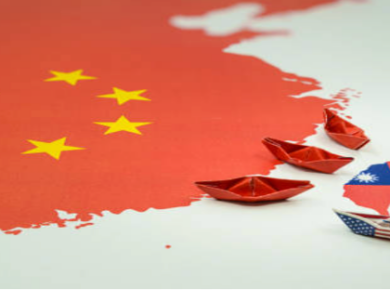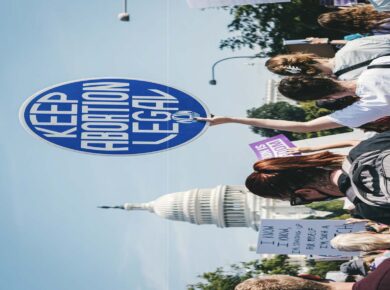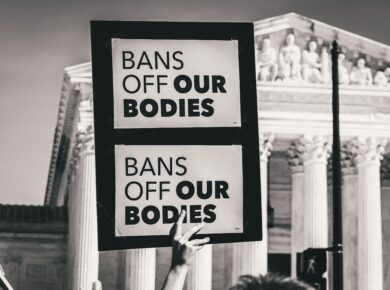Disclaimer: This blog post solely reflects the opinion of the authors and should not be taken to represent the general views of IPPR’s management team or those of fellow authors.
Source: Creative Commons
In the 2011 Arab Spring, democratic protesters forced authoritarian Yemeni president Ali Abdullah Saleh to step down. He turned the Yemeni government over to his deputy, Abdrabbuh Mansour Hadi. The Houthi rebels had attacked Saleh when he was in power, and struck Hadi in his weakness as a new leader. This set the Yemeni war into motion. By December 2018, 11-12 million people were starving in Yemen, there were outbreaks of diphtheria and cholera, and virtually no ability for aid to reach Yemen, especially into the interior of the country.
The October 2, 2018 killing of journalist Jamal Khashoggi at the Saudi consulate in Istanbul had ripple effects in global relations. One of these was that the United States, which had been dissatisfied by the reports of the rising human cost of the war in Yemen, increased pressure on Saudi Arabia to encourage Yemeni peace. According to Farea Al-Muslimi, Former US Secretary of Defense James Mattis called Saudi Crown Prince Mohammad bin Salman, who requested Sweden to facilitate a peace process, making the Stockholm Agreement possible.
From December 6–13, 2018, The United Nations envoy for Yemen, Martin Griffithsbrokered an agreement between the head of the Yemeni Houthi delegation, Mohammed Abdul-Salam, and Yemeni Foreign Minister Khaled al-Yemen in Stockholm. This is the first time the two parties had met in any capacity since 2016. Both parties made clear that it was not political cooperation, but strictly a humanitarian effort. The two parties sat in different rooms and Griffiths shuttled back and forth between them to create the Stockholm Agreement, which has three points:
- A political prisoner exchange
- Demilitarization of the Red Sea corridor around Hodeida including three ports, which constitute the entry point for 70% of goods
- A statement about the contested city of Taiz, which is also one of the places where the humanitarian crisis is most intense
The panelists at Chatham House agreed that this is a tenuous, short-term solution, threatened by a lack of key specifics and by the volatile nature of day-to-day events in Yemen. They conjectured that the most dependable part of the agreement, the prisoner swaps, were likely decided before the Stockholm discussions and would have proceeded without it. Discussions on the exchanges were held in Jordan in January, overseen by the United Nations.
The second point of the agreement, the demilitarization of Hodeida, is understood differently by each party. December and January talks have been held and a ceasefire implemented, but without specifics like scope, definition of breaches, or mechanisms to stop fighting if it does break out. A January United Nations resolution authorized six more months of monitoring to strengthen the ceasefire terms and increased the number of monitors to 75 people. They have been working from Djibouti, but are likely to be moved to Hodeida itself.
A significant challenge to resolving conflict in Yemen is understanding it. Media tend to refer to it in shorthand as a proxy war, but the war in Yemen is actually several different conflicts occurring simultaneously, and each interacting with the others in different ways, in different places, on different days. There are several distinct conflicts and obstacles to consider:
Yemeni government: the internationally recognized Hadi government versus the Houthis, fighting for control of the country. Each of these parties suffers from in-fighting, and subcategories of each are backed by different sources.
Proxy war: Saudi Arabia and Iran are commonly agreed upon to be fighting for relative power, though Iran denies supporting the Houthis. The Gulf States consider Iran an existential threat, and the primacy of Sunni versus Shia Islam may also be a factor.
Yemeni people: Well-armed families and geographic factions fight against one another, especially in the South, for power, land, and resources. Ghaida Al-Rashidy notes that even if a solution to the other conflicts could be agreed upon today, these conflicts would still continue and could start other, smaller wars and radicalization, having already drawn opportunist Al Qaeda and ISIS cells who are benefitting from the chaos. She further pointed out that areas highlighted on news report maps as being under Hadi government control are in fact under the control of locals on behalf of the government, and are often weakly held or points of local conflict themselves.
War economy: Aside from the obvious complications to deescalating conflict in an area flush with weaponry, Farea Al-Muslimi pointed out that many people are economically dependent on black market arms sales. He described a “happy business” between the President and the Houthis. Peter Salisbury echoed this, noting that those controlling the arms have risen to join the power elite, where now the Hadi government’s power is tied inextricably to land claims, arms sales, and international oil exports.
Context and history: Yemen was a poor country before the war, and is largely illiterate. The country is destabilized by the breakdown of all key infrastructure including the Yemeni Central Bank, the medical system, the press, schools, etc. The Houthis are a long-term challenger to the Yemeni authority, having attacked Saleh before Hadi assumed power. Having now had greater power during these years of conflict, they must be satisfied going forward.
The Chatham House panelists all agreed that Yemen is better off after the Stockholm Agreement than it was before it, but were uncertain as to what to predict about the future. If the Stockholm Agreement holds, Peter Salisbury stated, there would be no more definitive battles for control of Yemen. If it does not hold, he doubted that parties would be willing to have another discussion in the foreseeable future.
________________________________________________________________________________
Further Reading
https://www.washingtonpost.com/news/monkey-cage/wp/2018/12/21/what-does-the-stockholm-agreement-mean-for-yemen/?utm_term=.e37cfe1773fa
https://www.brookings.edu/blog/order-from-chaos/2018/12/05/yemen-after-a-saudi-withdrawal-how-much-would-change/
https://www.theguardian.com/news/2018/dec/21/yemen-uae-united-arab-emirates-profiting-from-chaos-of-civil-war
https://www.dw.com/en/yemens-war-explained-in-4-key-points/a-40056866
https://edition.cnn.com/interactive/2019/02/middleeast/yemen-lost-us-arms/?utm_term=link&utm_source=fbCNNi&utm_content=2019-02-10T08%3A30%3A16&utm_medium=social&fbclid=IwAR0SYljFM_kiCUws4BbkrDT5ptlz-jPUZph7SBJlsyMUJAhVlHT7jSXBM6A






